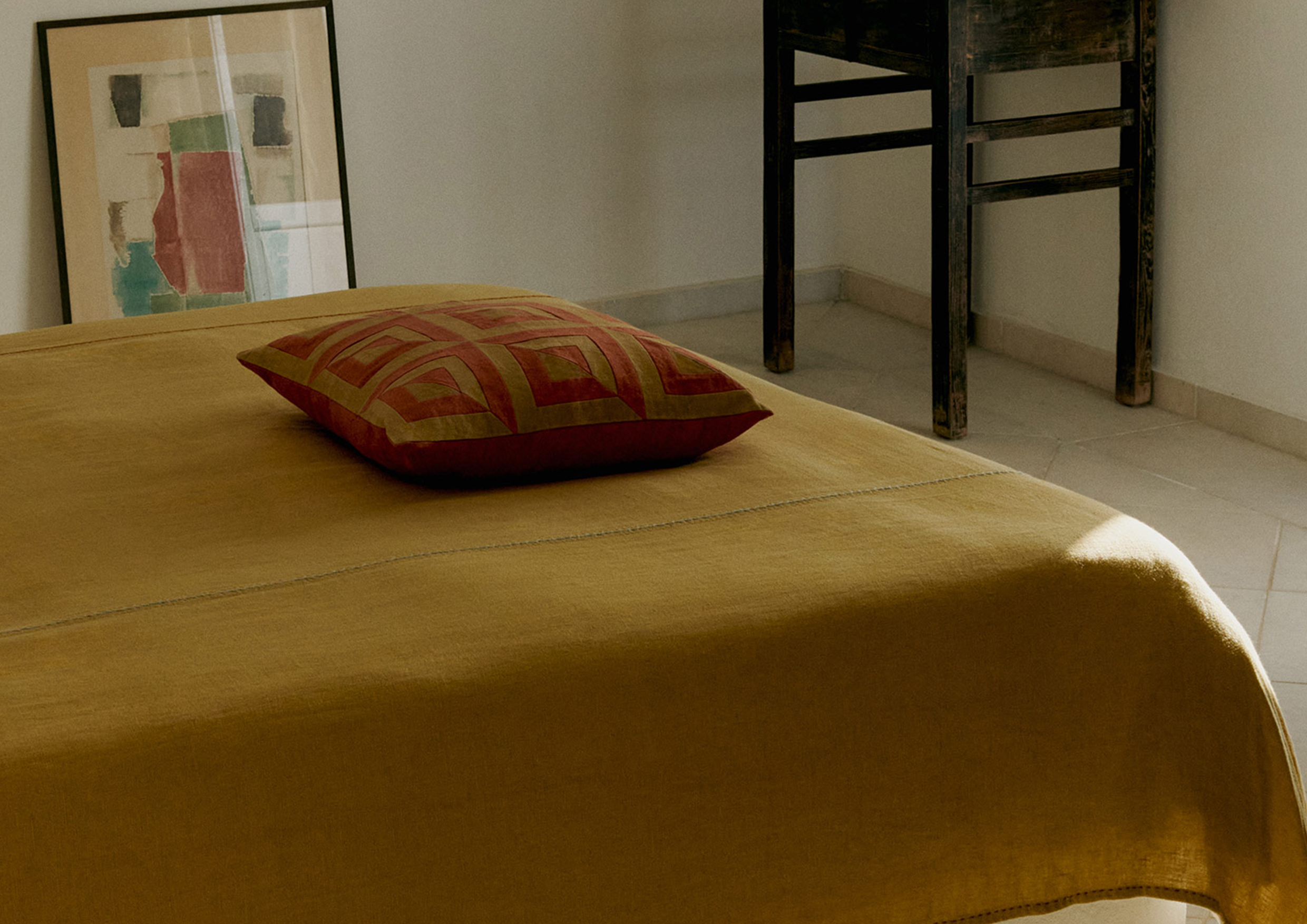
The world's oldest woven garment is made of linen. The Tarkhan Dress a long-sleeved shift with a pale grey stripe was unearthed from an Egyptian tomb in 1913 and has been radiocarbon-dated at over 5,000 years old.
The fact that the dress has survived at all is remarkable, but then linen is a remarkable material. One of the strongest fibres in existence, it resists mildew and bacteria, withstands a great deal of wear and doesn't easily rot. Consequently, historians know that it was worn even before the Tarkhan Dress: fragments of linen more than 36,000 years old have been found in prehistoric caves in Georgia.
These early clothes would have been made from wild flax plants, but it was the Ancient Egyptians and Mesopotamians who first developed organised linen industries. Egyptian linen was reserved for the wealthy, probably because of the length of time the plant takes to grow and process, coupled with the skill required to weave it (despite its strength, flax has little elasticity and individual threads break easily).

Linen was prized so highly in Egypt that it was traded as a form of currency. It was also used to make priests' robes, ships' sails and shrouds for the dead from privileged families. The fabric was difficult to dye and was customarily left its natural oatmeal colour or bleached white. This paleness surely reinforced its association with purity and religion throughout the ancient world. A passage in the Book of Revelation describes angels clothed in pure white linen, while Plutarch's Moralia, written in the first century AD, outlines why priests began to wear linen robes. “Because they revere the sheep, [they] abstain from using its wool they wear their linen garments because of the colour which the flax displays when in bloom, and which is like to the heavenly azure which enfolds the universe.” A fabric made from plants, Plutarch added, was more salubrious than one made from the hair of farm animals. Interestingly, he also noted that flax plants yield edible seeds and produce a plain and cleanly clothing, which does not oppress by the weight required for warmth and is suitable for every season. Similar words are often spoken now when extolling the virtues of linen.
In bellicose Ancient Greece, linen found another purpose: it was used as armour. The linothorax was a kind of breastplate that was used in place of metal (which could be punishingly hot on Mediterranean battlefields). Homer mentions Ajax wearing such a garment in The Iliad; historians still debate how it was made, but it was likely formed from up to 20 layers of linen, bonded with animal glue.
At roughly the same time Homer was composing his Iliad, linen was making its way to Britain and Ireland via the Romans and Phoenicians. At this time, linen vied with wool as the most widely used clothing fabric, but gradually a pattern seems to have evolved whereby linen garments formed an underlayer, and woollen ones were added on top when necessary for warmth. During the Middle Ages, the term linen came to be synonymous with underwear (the words lingerie and lining are both derived from it). This long-forgotten custom may help to explain why we still associate underwear with the colour white.

Europe turned out to be the ideal place for cultivating flax, as it grows best in a cool, moist climate. Linen industries sprang up in Flanders and Belfast, which brought huge prosperity to these regions. By 1840, over 70 per cent of households in the Flanders town of Tielt were involved in linen production; today, although that number has dwindled, there is still a linen museum in the nearby city of Kortrijk.
It's hard to imagine now how ubiquitous linen once was, as the industry was overtaken by cotton in the 19th century. Cotton fabrics were fast and easy to make on the latest industrial machinery; linen craftsmen working on hand looms struggled to keep up. That was far from being the end of the story, however. Flax proved its worth once again during World War Two, when it was used to make everything from ropes to tarpaulins for army equipment. With European supplies cut off by the German army, large tracts of land in southern Ireland and Australia were set aside for growing flax. Much of it was farmed by the women's land armies and made a major contribution to the war effort.
Over the past few years, linen has enjoyed a renaissance and flax is now grown all over the world, from Ireland to Russia. High thread-count cotton is no longer the only choice for fine bedlinen, with the relaxed, softly rumpled look of linen rising in popularity. The same qualities have led to its re-emergence as a fashion fabric. Another characteristic that makes linen relevant for today is its low impact on the environment. Flax requires no irrigation or chemical treatments; it is biodegradable and every part of the plant is used, whether for food (flaxseeds and linseed oil) or by-products (paper, chipboard and building materials). The Romans christened the flax plant Linum usitatissimum: most useful flax. It still deserves the name.
Words by Amy Bradford.
Shop the TOAST Linen Collection.
Add a comment